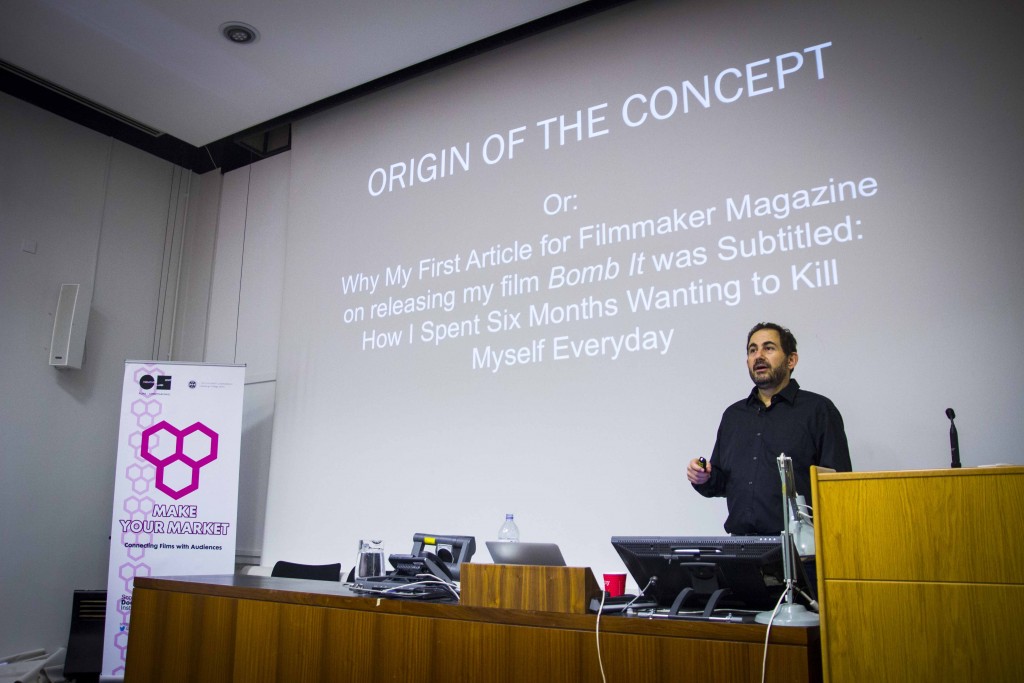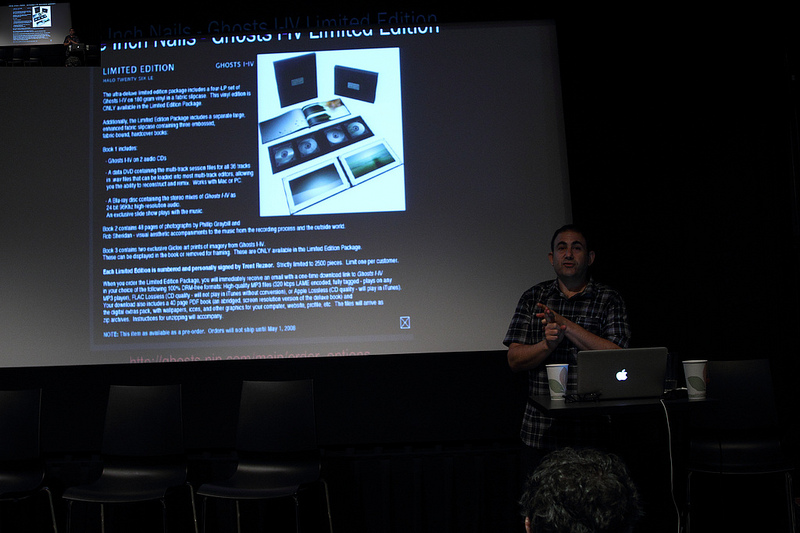What the F is a PMD and Why Do We Need One?

Back in 2010, two weeks before I went to print on Think Outside the Box Office, I coined a new crew position: the Producer ofMarketing and Distribution. This concept/position has taken off in varying fits and starts over the last five years – with people calling themselves and being credited as PMDs in the United […]
Top 10 Things Learned in the IFP PMD LAB

Top 10 Things Learned in the IFP PMD LAB By Jon Reiss I have had the good fortune to be involved in IFP’s Independent Filmmaker Labs for the past several years now and I have seen innumerable benefits to the films and filmmakers who participate. The Labs provide an opportunity for first-time filmmakers to […]
Top 5 Misunderstandings About Self Distribution
In the US many filmmakers are starting to get that they need to be responsible for distributing and marketing their films. We’ve been in this new paradigm since 2007 at least. But here in Europe – the mythology of white knights rescuing your film and you and carrying your film into the limelight is still […]
10 Ways in Which I Would Release Bomb It Today
Chris Horton asked me to write this post for the new Artist Services website that Sundance has set up. However, many filmmakers don’t have access to that site, and so I am posting it here on my blog for anyone to be able to read. Here is the post: In 2005 I started a documentary […]
Report from the UK: The PMD, Digital Rights and Booking Theatrical in the UK
I’m back now from my trip to the UK – workshop and consulting at the Edinburgh Film Festival as well as a workshop at the London Film School. What I love about travelling and doing these workshops is meeting people who are really helping change the lives of filmmakers, creating tools and resources to help […]
Back to Writing – 3 More Books
I have embarked on writing again and have two new books in the works and one more on the horizon. First off, I am writing a book on the Producer of Marketing and Distribution or PMD.
How to Self-distribute Online: Using E-junkie to Create an Automated Business Part 1
We’ve been exploring alternatives to fulfillment for filmmakers in the last month or two. Many filmmakers are actually doing self fulfillment when their numbers are low – and using a shopping cart such as E-Junkie. J.X. Carrera is a PMD who specializes in online media and international entertainment, particularly in regards to China and Japan. […]
PMD and the Oscar’s
We are so excited to announce the Oscar success of “God of Love” (in the category of live action short film), which, our good friend and former assistant here at TOTBO, Stephen Dypiango, acted as PMD. Stephen, now working on several projects as PMD, was given a special shout-out by director, Luke Matheny‘s Oscar acceptance […]
PMDs In Action
As you know, Sheri Candler, and I have been reaching out to working Producer’s of Marketing and Distribution (PMDs) and a few have contacted me with some festival and awards news: Stephen Dypiangco who is currently working as a PMD on “How to Live Forever” by Mark Wexler is also working as a PMD on a […]
Guest Post: PMD Training at Break Neck Speed
Today’s guest post is from Producer of Marketing and Distribution who lives and works Joe Jestus. Joe introduced himself to me on Twitter as a PMD living and working in the “next film capital of the United States”: Oklahoma. Joe actually changed his title to PMD when he discovered what it was. I asked him […]